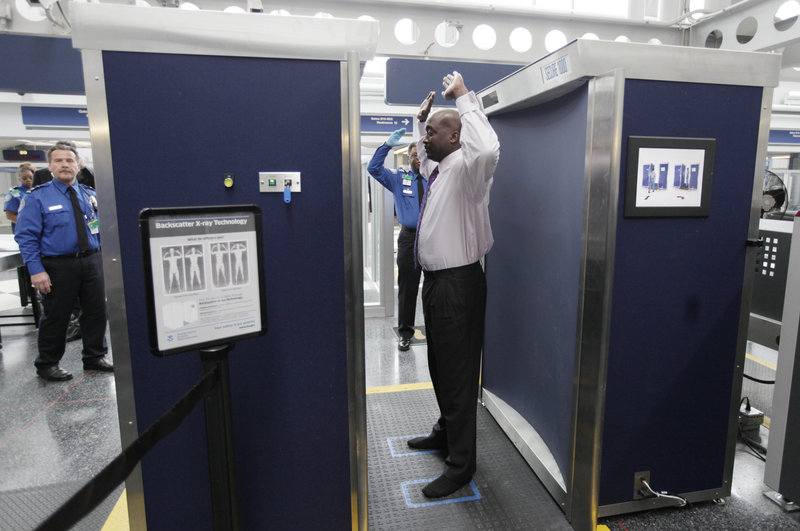Those airport scanners with their all-too-revealing body images will soon be going away.
The Transportation Security Administration says the scanners that used a low-dose X-ray will be gone by June because the company that makes them can’t fix the privacy issues. The other airport body scanners, which produce a generic outline instead of a naked image, are staying.
The government rapidly stepped up its use of body scanners after a man sneaked explosives onto a flight bound for Detroit on Christmas day in 2009.
At first, both types of scanners showed travelers naked. The idea was that security workers could spot both metallic objects like guns as well as non-metallic items such as plastic explosives. But the scanners showed every other detail of the passenger’s body, too.
The TSA defended the scanners, saying the images couldn’t be stored and were seen only by a security worker who didn’t interact with the passenger. But the scans still raised privacy concerns. Congress ordered that the scanners either produce a more generic image or be removed by June.
Rapiscan, the maker of the X-ray — or backscatter — scanner, acknowledged Thursday that it wouldn’t be able to meet the June deadline. The TSA said Friday that it ended its contract for the software with Rapiscan.
The agency’s statement also said the remaining scanners will move travelers through more quickly, meaning faster lanes at airports. Those scanners, made by L-3 Communications, used millimeter waves to make an image. The company was able to come up with software that no longer produced a naked image of a traveler’s body.
The TSA will remove all 174 backscatter scanners from the 30 airports they’re used in now. Another 76 are in storage. It has 669 of the millimeter wave machines it is keeping, plus options for 60 more, TSA spokesman David Castelveter said.
Not all of the machines will be replaced. Castelveter said some airports that now have backscatter scanners will go back to having metal detectors.
The Rapiscan scanners have been on their way out for months, in slow motion. The government hadn’t bought any since 2011. It quietly removed them from seven major airports in October, including New York’s LaGuardia and Kennedy airports, Chicago’s O’Hare, and Los Angeles International. The TSA moved a handful of the X-ray scanners to small airports. At the time, the agency said the switch was being made because millimeter-wave scanners moved passengers through faster.
Rapiscan parent company OSI Systems Inc. said it will help the TSA move the scanners to other government agencies. It hasn’t yet been decided where they will go, Alan Edrick, OSI’s chief financial officer, said in an interview.
Scanners are often used in prisons or on military bases where privacy is not a concern.
“There’s quite a few agencies which will have a great deal of interest” in the scanners, Edrick said.
Copy the Story Link
Send questions/comments to the editors.



Success. Please wait for the page to reload. If the page does not reload within 5 seconds, please refresh the page.
Enter your email and password to access comments.
Hi, to comment on stories you must . This profile is in addition to your subscription and website login.
Already have a commenting profile? .
Invalid username/password.
Please check your email to confirm and complete your registration.
Only subscribers are eligible to post comments. Please subscribe or login first for digital access. Here’s why.
Use the form below to reset your password. When you've submitted your account email, we will send an email with a reset code.